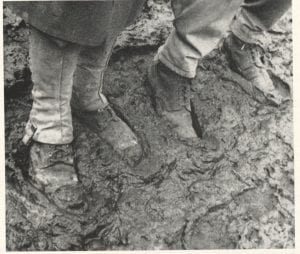This blog post was written by Graduate Student Assistant B.J. Thome. He is a Ph.D. candidate in English Literature in his second year at The Texas Collection. In this post, B. J. reflects on the hardships Black Americans face when tracing ancestral connections and how archives provide valuable, yet harsh documentation of family lineage.
In September of 1889, a doctor in Osawatomie, Kansas, sent an inquiry letter to his former home in Forkland, Alabama. His letter was an attempt to reconnect with his past, wondering if any of the people he knew during his childhood were still living. His immediate family had all passed away, and the doctor found himself nearing death. As he notes in his letter, “me ma Died in 1871 Sisters in 67 Brothers in 72 all dead but me Still I may die soon.” As he nears death, he considers his history and, wanting to reconnect with his past, he sends a letter asking the recipient to “send me all of my misstresses picture & masters” and to “tell all of my white folks to send me something togeather [sic] to remember them & I will keep it till I die no matter how small.”
This doctor was formerly an enslaved person, and his letter demonstrates the difficulties encountered when researching Black history in archival collections. The unfortunate reality is that records of Black Americans lives are far more difficult to trace than those of white Americans, especially prior to the end of slavery. White Americans might be able to trace their ancestry for centuries. For example, the Acree Family papers, which house the doctor’s letter, focus on tracing the Acrees’ genealogy, contain documents dating to 1784, and refer to records of the family’s ancestors as far back as the seventeenth century. Tracing Black Americans’ history, however, can be difficult as written records are frequently incomplete. As Eric Gardner observes, written sources of ancestral information, such as census records, seldom do more than acknowledge the existence of an enslaved person. He notes that Lucy Delaney, the author of a slave narrative, “was simply a hash mark on the federal census’s slave schedules for 1830 and 1840. Those census planners and takers—like the creators of local birth records—were uninterested in her existence beyond establishing her as property and tallying her for the U.S. Constitution’s three-fifths clause.”[1]
Archival research for Black history, therefore, must turn to alternate traces of information. Bills of sale, property lists, and wills, despite treating Black Americans only as property, contain traces of their presence. Some, such as Peter Clay’s will, provide more than the mere hash mark of the federal census records by at least naming the enslaved persons. One entry in Clay’s will provides an additional morsel of information, identifying not only the enslaved person’s name “Peter” but identifying his mother “Aggy.” Bills of sale, such as those contained in the J. W. Cocke Civil War papers and Walker Family papers, similarly identify enslaved persons by name and sometimes provide their approximate age. Such records, of course, reduce the enslaved person to property, listing them alongside animals or land in wills and property lists or placing a specific monetary value on their lives in bills of sale. Despite the immorality of such treatment, these records—fragmented and incomplete— offer indirect traces of Black lives, families, and history. These traces can be recovered from archival research, perhaps to add context to recovered slave narratives, as Gardner argues for in his discussion of Lucy Delaney, or provide connection to an otherwise lost past as the doctor attempts to do in his letter.
Despite his explicit requests for pictures or souvenirs from his former white owners, the doctor’s intent isn’t to connect to them. Instead, he is looking for traces of his own family and history, specifically a connection to his mother. Immediately after asking for the pictures, he writes: “I long to see all my mother used to weave.” The connection the doctor seeks is not to see the faces of his former owners. He wants to see the clothes they wore—the clothes which we can reasonably infer his mother weaved. Although he cannot see his mother’s face again before he dies, he holds out hope that he might at least see the clothes she made, the physical evidence of her presence. Because his mother lived most of her life enslaved, it would be highly improbable that she would have had a picture taken of her. Traces of her history, labor, and existence might remain however, in the images of the products of her labor. The clothes she wove might allow the doctor to connect to his history and family, to retain the human connection that the evils of slavery attempted to sever.
Bibliography
[1] Eric Gardner, “Slave Narratives and Archival Research,” in The Oxford Handbook of the African American Slave Narrative, ed. John Ernest (New York: Oxford University Press, 2014), 47.
Acree Family papers, Accession #2986, Box 8, Folder 12, The Texas Collection, Baylor University.































